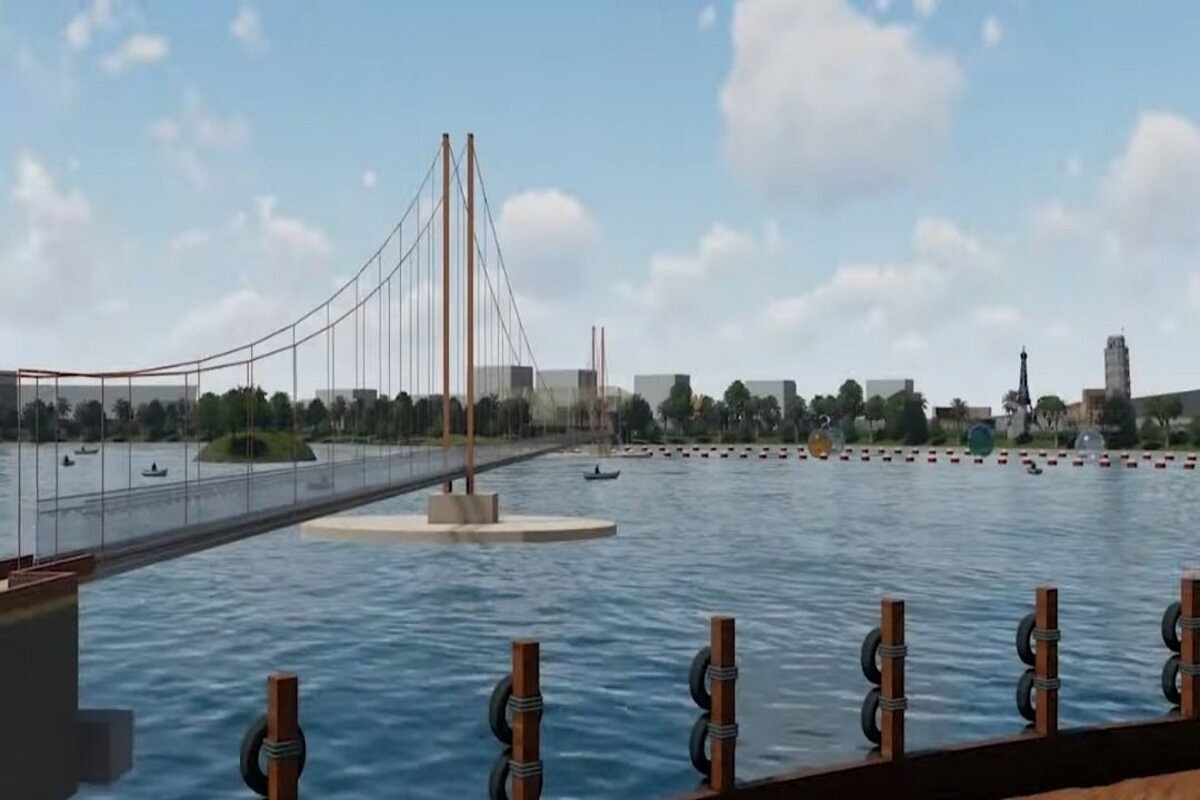Infrastructure
NGT Grants Permission To Greater Chennai Corporation To Proceed With Development Of Villivakkam Lake

An illustration of glass bridge on villivakkam lake, Chennai (via Twitter)
Last Wednesday, the National Green Tribunal (NGT) gave Greater Chennai Corporation (GCC) permission to build the eco-park at Villivakkam lake. But it stipulated that the lake's capacity for storage should not be reduced and that there should be no pollution during the construction and operating phases.
The NGT Southern Bench has instructed the civic body to either create a new water body (22 acres) or deepen two existing water bodies to add 1.5 lakh cubic metres of storage capacity to the Kosasthalaiyar River Basin.
The Bench said further construction should be outside the bund of the lake. And also, it is necessary to take steps to prevent waste from being dumped into the lake by visitors to the eco amusement park.
The above directions by NGT were given in a case involving the Villivakkam-Konnur lake that anti-corruption NGO Arappor Iyakkam filed in 2016.
In his plea, Jayram Venkateshan, the convener of Arappor Iyakkam, claimed that the Villivakkam lake had been reduced from 214 acres to 39 acres, and the proposed park would be an environmental nightmare.
As part of the 45 crore project, the corporation has already built suspension bridges and ziplines and awarded contracts for constructing other facilities like amphitheatre, restaurants and bowling alleys.
The civic body has also restored 25 acres of the tank and announced plans to build an amusement park in the bund area. However, following the NGT's orders, work on the amusement park was halted in February.
The GCC informed the NGT that Villivakkam Tank is an artificially developed water body and that the concerns highlighted will only apply in the case of natural lakes in response to claims that structures were built there.
Earlier this year, Corporation commissioner Gagandeep Singh Bedi told the tribunal that the land in question, which was classified as an 'Institutional Zone' and not a water body, was with Tamil Nadu Housing Board and CMWSSB for 37 years, which they used to treat sewage. The land can't be considered a water body, as per the Times of India report.
The existing lake has a water spread area of 17.5 acres and a total lake area of 20 acres. The twin reservoir will likely be built on an eight-acre plot with a 4.5-acre water spread area. The presence of banyan, peepal, and neem trees on the island in the waterbody has begun to attract many birds.
Stormwater drains from 60 streets in the area have been connected to the body of water. The waterbody connects Otteri Nullah, Kumarasamy Canal, MTH Road, and the TVS Canal.
The tank's water quality will be monitored as part of the Smart City Mission Project. Following the construction of a wall, the Corporation plans to increase greenery in the area.
According to The Hindu report, currently, the Villivakkam-Konnur lake covers 39 acres, of which 11.5 acres are owned by the Chennai Water and Sewerage Board (CMWSSB). The Bench instructed CMWSSB to open up 3 acres of land to install a Tertiary Treatment Ultra Filtration (TTUF) plant and hand over the remaining 8.5 acres to the GCC.
Before being discharged into the water body, the board must ensure that the treated water meets the prescribed standards for drinking water or, at the very least, bathing water, according to the Bench.
The Bench stated that the GCC had given the undertaking to create a water body similar to Villivakkam Lake. And also that it will connect the two lakes with balancing culverts or a small bridge whenever the CMWSSB transfers the 8.5 acres of land, as per The Hindu report.
The GCC, the Chennai Collector and the Tamil Nadu Housing Board have been urged to take action to rehabilitate the lake invaders. And to remove encroachments from 2.5 acres of land, add that area to the lake site, and deepen the lake.
According to the Bench, the project must be finished in one and a half years after consulting with the department of water resources.
Support Swarajya's 50 Ground Reports Project & Sponsor A Story
Every general election Swarajya does a 50 ground reports project.
Aimed only at serious readers and those who appreciate the nuances of political undercurrents, the project provides a sense of India's electoral landscape. As you know, these reports are produced after considerable investment of travel, time and effort on the ground.
This time too we've kicked off the project in style and have covered over 30 constituencies already. If you're someone who appreciates such work and have enjoyed our coverage please consider sponsoring a ground report for just Rs 2999 to Rs 19,999 - it goes a long way in helping us produce more quality reportage.
You can also back this project by becoming a subscriber for as little as Rs 999 - so do click on this links and choose a plan that suits you and back us.
Click below to contribute.
Latest